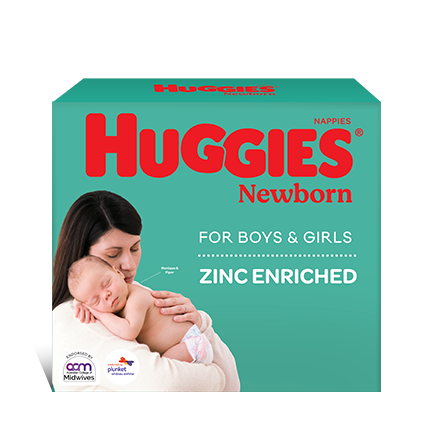The term stretch and sweep may seem oddly familiar, but it’s got nothing to do with cleaning the kitchen floor! It is a procedure unique to pregnancy and labour. A stretch and sweep is one way of initiating labour and is considered a gentler, less invasive induction option. It is generally done when a mother is past her due date or when labour needs to be induced because of (minor) obstetric complications. It is an alternative to other induction techniques such as artificial rupture of the membranes (ARM) and/or a Syntocinon drip.
The goal for having a stretch and sweep is to stimulate the production of the hormone prostaglandin which occurs naturally in the lining of the uterus. Prostaglandins role is to stimulate the uterus to begin contracting. Synthetic prostaglandin is available in tablet or gel form and this is an alternative way to deliver prostaglandin to the cervix.
Why is a Stretch and Sweep done
- To induce labour when the baby is overdue.
- As a means of “social induction” e.g. when a mother wants her baby to be born within a predictable time frame. This is a controversial topic and there is real variation of opinion whether this should occur.
- To help to “ripen” the cervix so it can start to dilate and efface (thin out).
- To release hormones known as prostaglandins. These are produced by the uterus and cervix and help to make the uterus contract and for labour to occur.
- To make the cervix more favourable for induction.
Risks of having a Stretch and Sweep
Generally this procedure is considered a completely safe and effective way of stimulating contractions in early labour. However, if the mother’s due date has been inaccurately assessed and she is not yet due to have her baby then complications relating to prematurity can occur. These include issues with the baby being able to regulate their own temperature, low birth weight, breathing problems and difficulty feeding.
There is no evidence to show that having a stretch and sweep done increases the risk of infection to a mother or her baby.
Risks continued:
- Breathing problems for the baby. One of the many benefits for babies when they are born vaginally is that their lungs are gently compressed by the uterine contractions. This helps with squeezing out excess amniotic fluid in and around their lungs. When they start to breathe on their own their lungs need to inflate fully in order to breathe effectively.
- There is generally an increase in the risk of having a caesarean section delivery when a mother has any form of labour induction.
- Having a stretch and sweep done can be painful, especially if the mother is not yet in labour.
- Most women find they have a slight bleed and increase in mucousy vaginal discharge after the procedure. Sometimes a stretch and sweep causes contractions which don’t eventuate into labour but are painful nonetheless.
How is a Stretch and Sweep done?
The midwife or obstetrician will explain the procedure and gain your consent. Parents need to feel fully informed of the benefits, risks and expected outcomes of having a stretch and sweep done.
It is important to go to the toilet and empty your bladder beforehand. The obstetrician or midwife will do an abdominal examination first and listen to the baby’s heartbeat. If there is any change from normal or anything which does not seem right, then the stretch and sweep should not be done.
The midwife or doctor gently inserts two gloved fingers into your vagina and their forefinger through your cervix. They will check if your cervix is what is known as “favourable” e.g. soft, beginning to dilate and effacing/ thinning. A cervix which is high and closed is not ideal for a stretch and sweep. It also increases the likelihood of this being a painful, rather than uncomfortable procedure.
They will then feel for the membranes which are enclosing the baby and resting on your cervix. Stretch refers to the process of stretching the cervix so it opens a little and sweep refers to separating the membranes from where they adhere around the cervix in the lower portion of the uterus.
The cervix needs to be soft and slightly open already so that a finger can be inserted. If the mother’s cervix is not open then another option is for the obstetrician/midwife to gently massage the cervix so that prostaglandins may be released.
The aim with a stretch and sweep is for the obstetrician or midwife is to rotate their finger in a sweeping and circular motion to a full 360 degrees. They need to be careful that they do not break the membranes when they are doing this. Though sometimes this is inevitable, especially if the membranes are bulging and about to rupture spontaneously.
What does it mean to have your waters broken?
Artificial rupture of the membranes (ARM) is a different procedure to a stretch and sweep. This process requires a specially designed hook, which has a long handle and an end which looks like a crocheting hook. This is gently inserted into the mother’s vagina, through her cervix and is then positioned to snag or hook the membranes so a hole is made and the amniotic fluid flows out. This is sometimes enough to initiate labour without any need for any other induction methods.
How effective is a Stretch and Sweep?
Statistically, there is around a 24% success rate of the procedure being effective with labour tending to start within the next 48 hours. Most women will deliver their baby within one week of having a stretch and sweep done. If labour has not started within 36 hours though, the procedure can be repeated.
Some caregivers routinely do a stretch and sweep at every ante-natal appointment from 38 weeks of gestation, though this is not considered necessary and can be risky.
If the stretch and sweep does not bring on labour, then the next decision may be to do an ARM and start a Syntocinon drip.
Last Published* May, 2024
*Please note that the published date may not be the same as the date that the content was created and that information above may have changed since.























